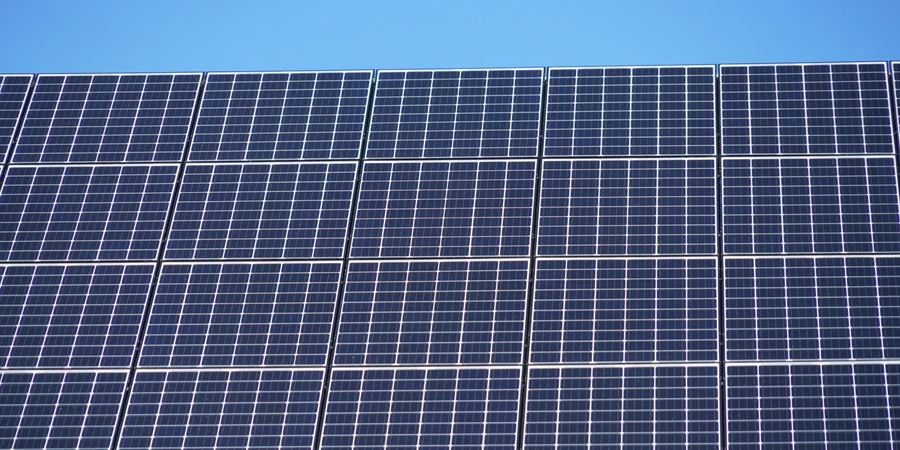- US government to imminently end Section 201 tariff exemption for bifacial solar panels
- It also plans to discourage stockpiling of modules by ensuring imported panels are installed within 180 days
- It may also increase the tariff quota for solar cells by 7.5 GW, up from 5 GW at present
- The Department of Treasury also released additional guidance for bonus tax credit under the IRA
The White House has confirmed the rumors of ending tariff exemption for bifacial solar panels under Section 201 of the Trade Act of 1974, saying it plans to ‘imminently’ remove the exclusion to protect the US solar industry from unfair imports. The government has also announced measures to boost local manufacturing by discouraging stockpiling of panels and offered additional guidance on the domestic content bonus under the Inflation Reduction Act (IRA).
Last month, a Reuters report claimed that the US government was requested by a consortium of solar manufacturers producing in the country, led by Hanwha Qcells, to bring bifacial panels under the tariff zone. These had been excluded from the tariffs for a period of 2 years (see White House May End Exemption For Bifacial Solar Panels).
However, the government has provided a leeway. Importers with pre-existing contracts for bifacial solar modules to be delivered within 90 days of the removal of the exclusion will be able to certify those contracts to continue using the exclusion for that period, said the White House.
The government says it will crack down on stockpiling of solar modules to ensure cheaper-priced imported solar panels don’t flood the US market. Panels imported duty-free now need to be installed within 180 days.
The Customs and Border Protection (CBP) will ensure this by requiring importers to provide a certification of module utilization with detailed information about the modules being deployed. Both the Department of Energy and the Department of Commerce will closely monitor import patterns.
The Biden administration has also confirmed it plans to adhere to the 24-month moratorium on solar imports from the 4 Southeast Asian nations of Cambodia, Malaysia, Thailand and Vietnam, which ends on June 6, 2024. Local PV manufacturers recently filed a set of petitions with the US government to impose antidumping and countervailing duties on companies operating from these countries (see US Solar PV Manufacturers Launch AD/CVD Petitions).
The Solar Energy Manufacturers for America (SEMA) Coalition has welcomed these measures, saying this closes the loophole in the 201 safeguard bifacial exemption.
“Lifting the exemption reinstates a 15% tariff, providing important, but sadly still insufficient, relief from anti-competitive trade practices until the tariff is set to expire in February 2026,” said SEMA Coalition’s Mike Carr.
US environment non-profit Sierra Club also welcomed the Section 201 update saying bifacial modules now account for more than 98% of US imports. This will ensure the buildup of a robust domestic solar supply chain.
The Biden administration has also provided additional guidance on the bonus tax credit for clean energy developers using locally produced steel, iron and manufactured products to encourage clean energy manufacturing.
“Today’s Notice creates a new elective safe harbor that gives clean energy developers the option of relying on Department of Energy-provided default cost percentages to determine bonus eligibility,” explained the White House regarding the fresh guidance issued.
According to the administration, since President Biden took office, companies have announced more than $17 billion and 335 GW of manufacturing investment throughout the solar supply chain. Announced solar module manufacturing capacity has grown to exceed 125 GW, compared to 7 GW before the IRA was passed.
To encourage upstream solar supply chain development, the government may increase the Section 201 tariff-rate quota for solar cells by 7.5 GW compared to 5 GW at present if imports approach the current quota level.
Roth MKM’s Philip Shen in an industry note said, “The bottom line is that we continue to expect US made cells to be practically required to secure the 10% DC ITC adder—likely to the dismay of much of the industry.” Local production of solar cells is aimed at bringing wafer production to the US.
The President and CEO of the Solar Energy Industries Association (SEIA), Abigail Ross Hopper, commended the administration’s support for local manufacturing, especially the plan to expand cell manufacturing.
“This move provides an important bridge for module producers to access the supply they need while the United States continues to advance solar cell manufacturing. Today’s decision will help create a strong, stable module manufacturing sector that can sustain robust cell production in the long run,” added Hopper.
These announcements follow the doubling of Section 301 tariffs on imported solar cells by the US government (see US Government To Increase Tariffs On Imported Solar Cells).
Source from Taiyang News
Disclaimer: The information set forth above is provided by Taiyang News independently of Chovm.com. Chovm.com makes no representation and warranties as to the quality and reliability of the seller and products.




